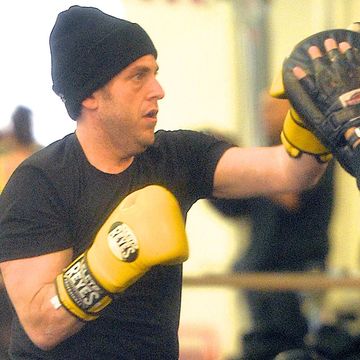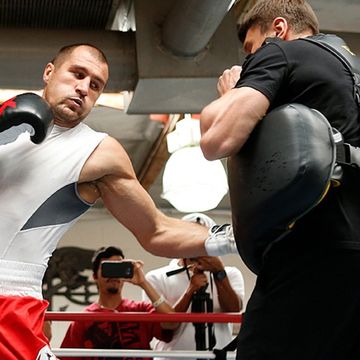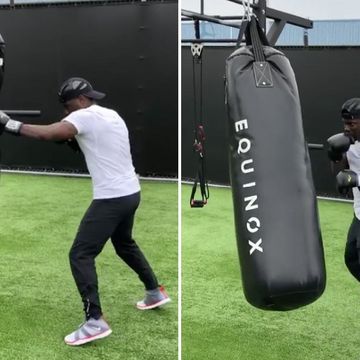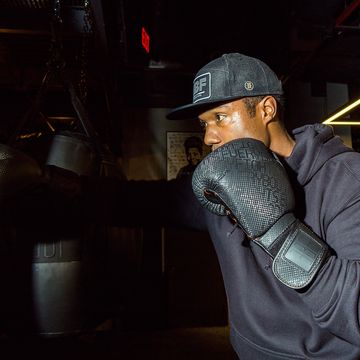If you haven’t tried boxing, you’ll be surprised how fast a 1-2 punch can knock out your energy. But stick with it, and you just might become ripped like Rocky.
“Boxing translates really well to anaerobic power, which can help any athlete be stronger and faster,” says Emily Hutchins, a certified personal trainer and the owner of On Your Mark Coaching & Training in Chicago.
In particular, boxing packs a punch for your core — building strength, stability, and rotational power. It’s also leg heavy, Hutchins says. (On Men's Health editor learned that boxing is a killer leg workout. Find out what else he discovered when working out with WBO champ Chris Algieri.)
“Most people think of boxing and they think of punching, which of course is accurate, but 90 percent of your power, if you ask me, is from your legs and core,” she says.
“A big thing we do is talk to people about using the legs and core versus just throwing your arms around. There are massive power benefits behind properly engaging these muscles when you are punching.”
To help target these areas—and beyond—Hutchins selected three of the best strength-building boxing moves.
Jab, Cross, Hook, and Upper Cut
The basic “1, 2, 3, 4 punches” are excellent for strength gains in the ring, Hutchins says. “These are very core-based punches, and you’ll also work your shoulder, biceps, and upper back.”
Before trying any of these punches, Hutchins warns that boxing is a sport, and like any other sport, without correct form, you risk injury. Work with a professional who can show you how to warm up, cool down, and execute proper punches before jumping into a group class or an unstructured environment.
‘Ground and Pound’
A drill used at On Your Mark, this move is derived from self-defense, Hutchins says. To perform it: Straddle a punching bag that’s lying on the ground. While engaging your inner thighs and core, kneel over the top of the bag and deliver crosses to it.
“There’s massive core benefit to that, as well as inner-thigh strengthening, which can help promote pelvic stability,” Hutchins says.
Turbo Punches
For this final move, you can pick your poison: Take any one of the four foundational punches, and facing either a bag or a (properly outfitted) sparring partner, punch as hard as you can for 20 seconds.
“This spikes your heart rate, and definitely forces upper body rotation, so there’s that core element again,” Hutchins says, adding, “This is going to burn out your shoulders really fast.”
Up the ante and make it a tabata — eight rounds of 20 seconds on the bag, with 10 seconds of rest in between.
Pro tip: After a boxing workout, next-day soreness throughout your upper back is a sign of good form, Hutchins says.
Next, you’ll answer to “Cinderella Man.”












